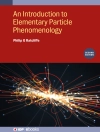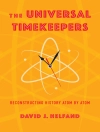There is a growing need in both industrial and academic research to obtain accurate quantitative results from continuous wave (CW) electron paramagnetic resonance (EPR) experiments. This book describes various sample-related, instrument-related and software-related aspects of obtaining quantitative results from EPR expe- ments. Some speci?c items to be discussed include: selection of a reference standard, resonator considerations (Q, B , B ), power saturation, sample position- 1 m ing, and ?nally, the blending of all the factors together to provide a calculation model for obtaining an accurate spin concentration of a sample. This book might, at ?rst glance, appear to be a step back from some of the more advanced pulsed methods discussed in recent EPR texts, but actually quantitative “routine CW EPR” is a challenging technique, and requires a thorough understa- ing of the spectrometer and the spin system. Quantitation of CW EPR can be subdivided into two main categories: (1) intensity and (2) magnetic ?eld/mic- wave frequency measurement. Intensity is important for spin counting. Both re- tive intensity quantitation of EPR samples and their absolute spin concentration of samples are often of interest. This information is important for kinetics, mechanism elucidation, and commercial applications where EPR serves as a detection system for free radicals produced in an industrial process. It is also important for the study of magnetic properties. Magnetic ?eld/microwave frequency is important for g and nuclear hyper?ne coupling measurements that re?ect the electronic structure of the radicals or metal ions.
Tabela de Conteúdo
Introduction.- Principles of Quantitative EPR; Why should examples of applications be quantitative?; Examples of applications.- Introduction to Quantitative EPR; General expression for CW EPR signal intensity; The EPR transition; Derivative spectra; The CW EPR line width; Second derivative operation; What transitions can we observe; Features of transition metal EPR; Parallel and perpendicular transitions.- Getting started- some practical matters; Operating the spectrometer-cautionary notes; Sample preparation; Don´t forget the cooling water!; Detector current; Automatic frequency control and microwave phase; Searching for a signal; Gain; Effect of scan rates and time constants on S/N and signal fidelity; bandwidth considerations; scan rate and filter time constant; selecting a non-distorting filter and scan rate; A note about comparing noise in CW and pulsed EPR; Background signals; Integration; Microwave power; Modulation amplitude; Modulation amplitude calibration; How to select modulation frequency; Modulation sidebands;Illustration of the effect of modulation amplitude, Modulation frequency, Microwave power on the spectra of free radicals; Phase; Automatic frequency control and microwave phase;Sample considerations; Passage effects; Software; Summary guidance for the operator; Scaling results for quantitative comparisons; Signal averaging; Number of data points, Cleanliness; Changing samples; NMR gaussmeter interference.- What matters, and what can you control? Crucial parameters and how they affect EPR signal intensity;What accuracy can one aspire to?- A deeper look at B1 and modulation field distribution in a resonator; Inhomogenity of B1 and modulation amplitude; Flat cells; Double-cavity simultaneous reference and unknown.-Resonator Q; Conversion efficiancy, C;Contributions to Q; Measurement of Resonator Q.- Filling factor. Temperature; Intensity vs. temperature; Practical example; Glass-forming solvents; Practical aspects of controlling and measuringsample temperature; Operation above room temperature.-Magnetic field and Microwave frequency;G-values; Microwave frequency; Magnetic field; Magnetic field homogenity; Coupling constants vs. hyperfine splittings.-Standard samples; Comparison with a standard sample; Standard samples for Q-band; Achievable accuracy and precision- g value and hyperfine splitting.- How good can it get?- Absolute EPR signal intensities; The spin magnetization M for an arbitrary spin S; Signal voltage; Calculation of noise; Calculation of S/N; Summary of impact of parameters on S/N; How to improve the spectrometer-the Friis equation.- Less common measurements with EPR spectrometers; Multiple resonance methods; Saturation transfer spectroscopy; Electrical conductivity; Static magnetization.












